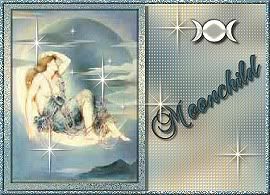Thursday, July 29, 2010
Lughnasadh or Lammas
Colors: Gray, green, gold, yellow
Symbols: All grains, breads, threshing tools, athame
Date: Occurs 1/4 of a year after Beltaine. True astrological point is 15 degrees Leo, but tradition has set August 1st as the day it is typically celebrated. Since the Ancient Celts passed their days from sundown to sundown, the celebration would usually begin the night before on July 31st.
The turning of the wheel now brings us to Lughnasadh (LOO-nus-uh), also known by its medieval Christian name of Lammas, named in honor of the Celtic god Lugh, a name which means “light” or “shining.” Although somewhat confusing, we are not celebrating the death of Lugh (the God of light does not mythically die until the autumn equinox), but rather the funeral games that Lugh hosted to commemorate the death of his foster mother, Taillte. In Ireland, Lugnasadh is often called the "Tailltean Games". A common feature of the games were the "Tailltean marriages", rather informal and lasting only a year and a day or until next Lammas, at which time the couple would decide to continue the arrangement or stand back to back and walk away, thereby dissolving the marriage. The parish priest was not bothered to perform these trial marriages, they were usually performed by a poet, bard, priest or priestess of the Old Religion, or shanachie, and were very common into the 1500's. It is from this custom that our present-day Handfastings must come.
According to one of his many legends, Lugh was the last great leader of the Tuatha de Dannan. In one of the Tuatha’s victories, Lugh spared the life of Bres, a defeated enemy captain, in exchange for advice on ploughing, sowing, and reaping. He was seen as a multi-talented deity, being capable and quite good at all he undertook. The myths of Lugh include the prevalence of his many skills and the wedding of these skills to the potential or unrealized abundance of the land. According to the writing of Caesar, he was also regarded as the patron of all the arts, traveling, and influence in money and commerce. To the Romans, Lugh was seen as a counterpart to Mercury. Lugh is the son of Arianrhod, who is associated with sacred kingship and Three-fold Death. His wife’s name is Blodeuwedd, also known as the Flower Maiden.
Lughnasadh is the first of the three harvest Sabbats, Mabon and Samhain being the other two, which celebrates the ripening grains and corn. With the harvest so prevalent, Pagans see the theme of the sacrificed god motif emerge. His death is necessary for rebirth of the land to take place. Called by many names, “Green Man,” “Wicker Man,” “Corn Man” or just the “Spirit of Vegetation,” his essence begins to merge with the harvested crops, a sacrifice that will be realized with the new growth in the spring.
In old times, it was the duty of the King to sacrifice himself for the land, an idea that has been seen in the many legends of cultures both new and old, throughout recorded history. The gathering of the first crops of the year is also used to symbolize the success and extent of the power raised from the Beltane rites when the Sacred Marriage of the Lord and Lady took place. The theme of sexuality and reproduction is carried over into Lughnasadh as well to ensure the remainder of a good harvest.
This sabbat is also known as the celebration of bread. As bread was one of the main staples of our ancestors, the ripening of the grain was the cause for great celebration. The reaping, threshing and preparation of these breads spawned great ritual and ceremony to ensure bounty for the following year.
This time of the year finds us with fields to harvest, the first of a bountiful crop that will hold us through the winter months. Even though the hottest days of summer are upon us, we have but to observe to see that fall is just around the corner. Shadows are growing longer as the days slowly become shorter. Squirrels are busily gathering food for the coming winter. It is a time to begin canning produce from the garden, a time to save and preserve.
Some ideas for celebration include:
Sacrifice bad habits and unwanted things from your life by throwing symbols of them into the sabbat fire.
Bake a loaf of bread in the shape of a man and sacrifice him in your ritual. Make him a part of your feast but save a piece to offer the gods.
Take time to actually harvest fruits from your garden with your family. If you don’t have a garden, visit one of the pick-your-own farms in your area.
Include bilberries or blueberries in your feast; these were a traditional fruit, whose abundance was seen as an indicator of the harvest to come.
Gather the tools of your trade and bless them in order to bring a richer harvest next year.
Share your harvest with others who are less fortunate.
Decorate with sickles, scythes, fresh vegetables & fruits, grains, berries, corn dollies, bread. Colors are orange, gold, yellow, red and bronze.
And so the wheel turns.....
note: article borrowed from Mooncrone, and original author unknown to me....
Labels: Lammas, Lughnasadh
